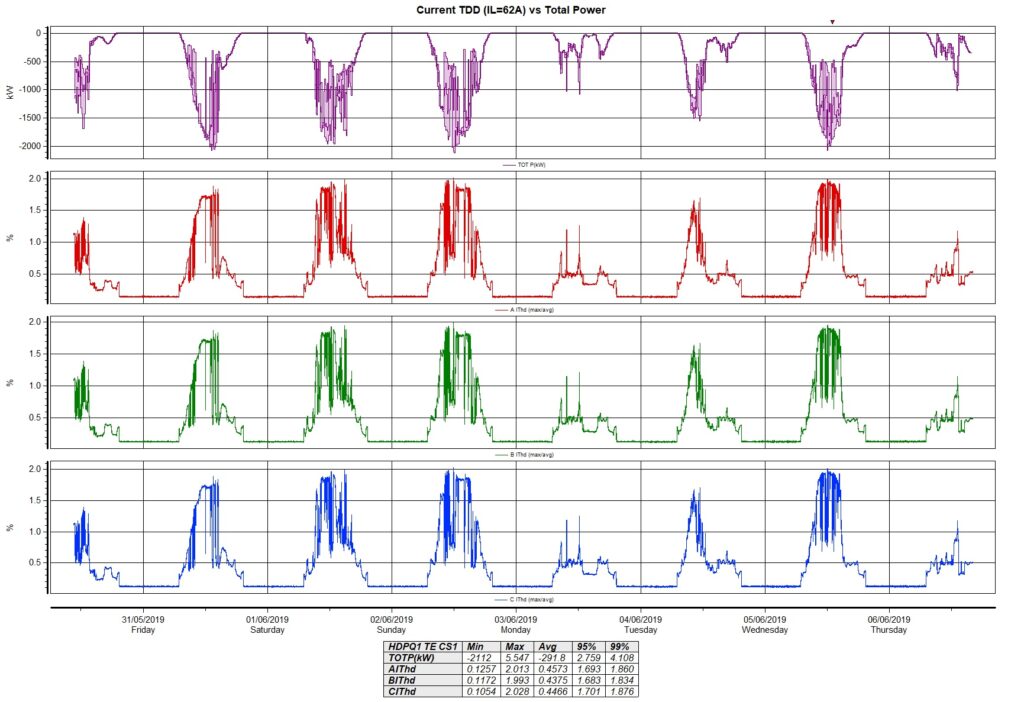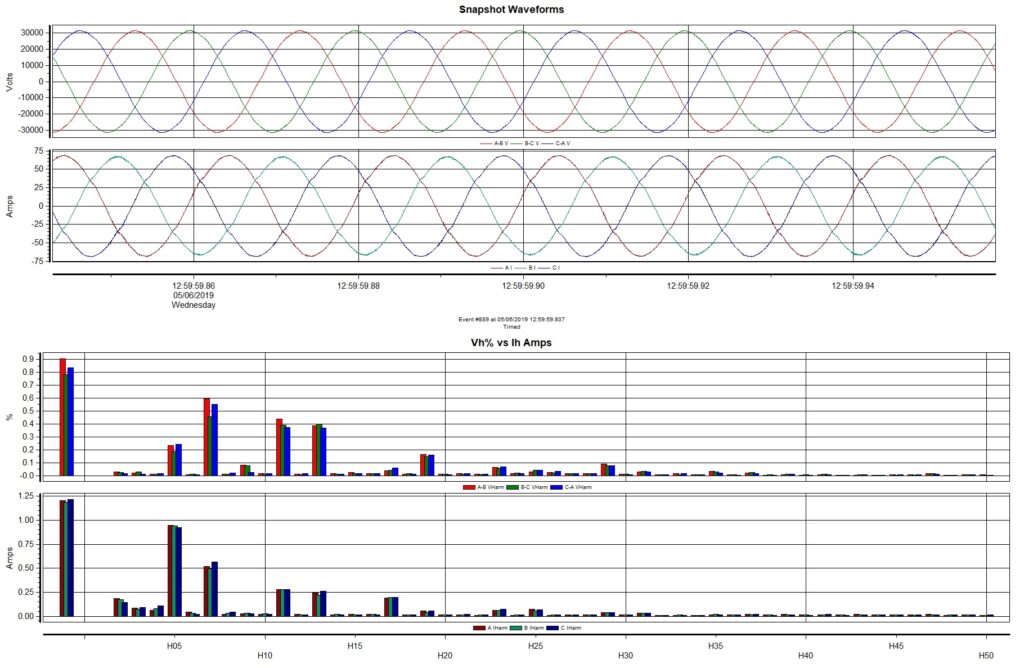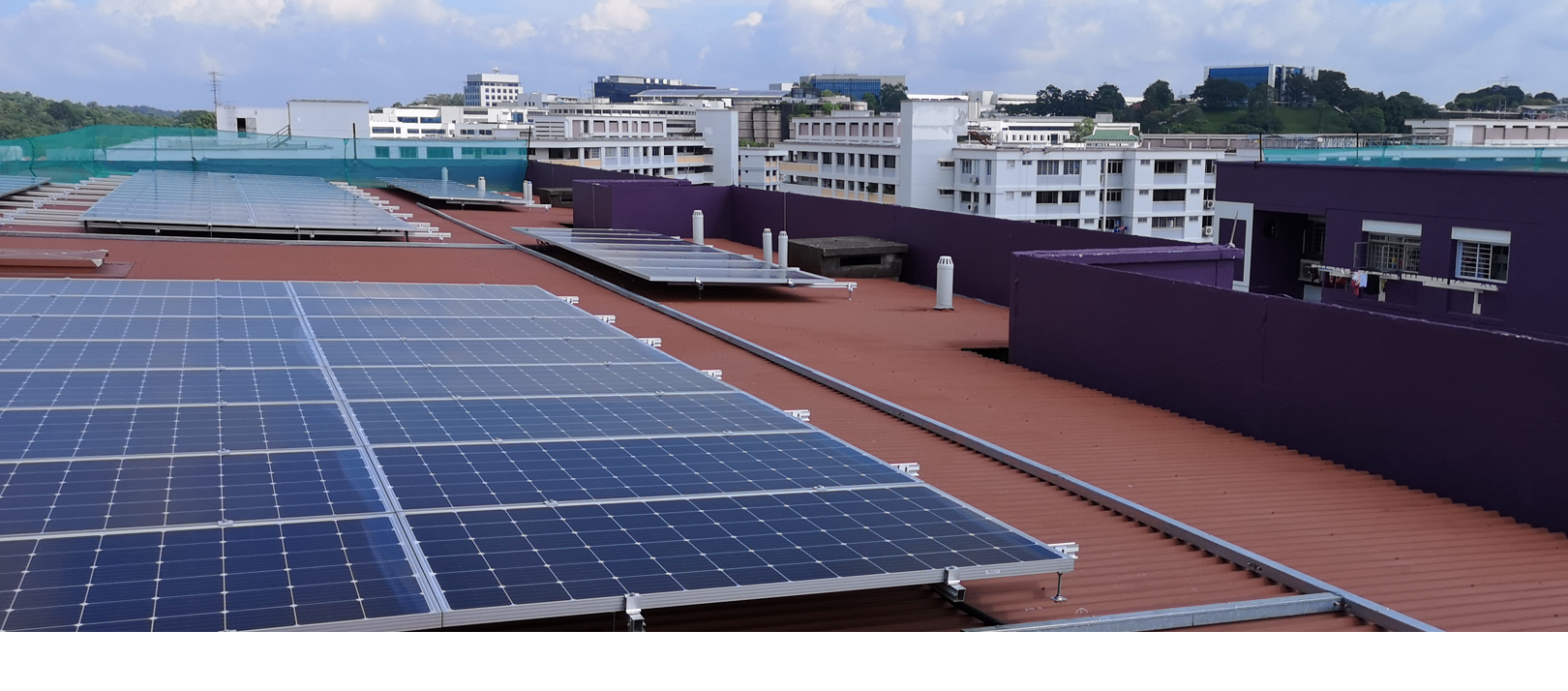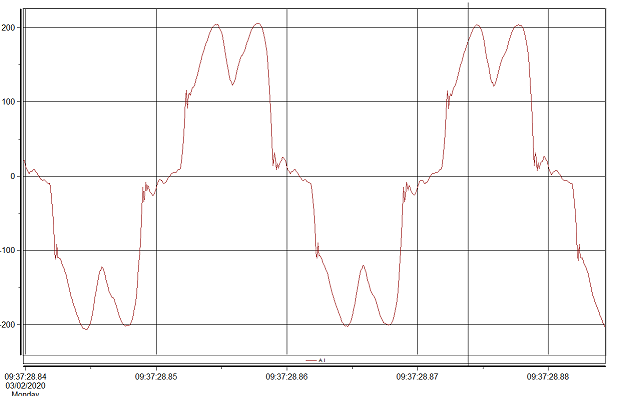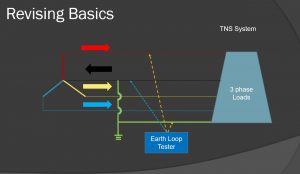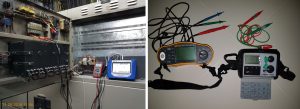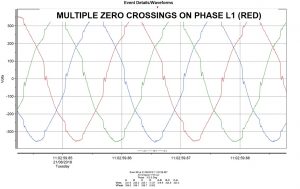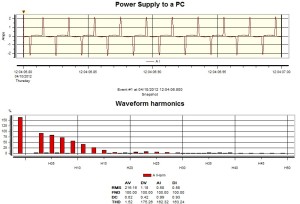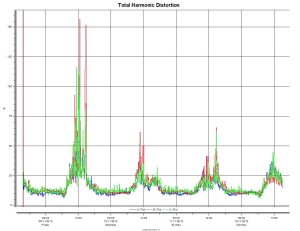In general, current harmonics contribution from solar PV inverters do not pose much of a power quality problem. Its ITHD is usually small and negligible as compared to a harmonics-producing load such as a variable speed drive (ITHD for a typical 6-pulse drive ranges between 30% – 50%).
Typically, one will find a Current Total Harmonic Distortion of 3% stated in the datasheet for a quality-brand inverter, as seen here.
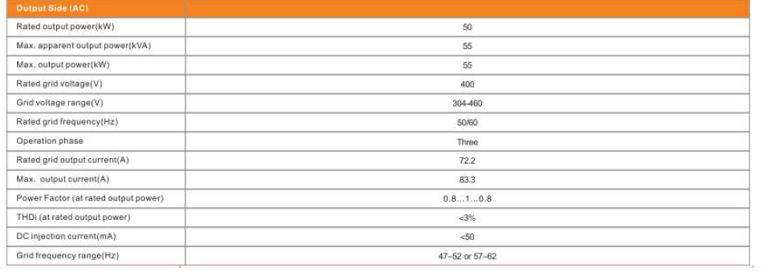
In Singapore, for a Grid-Tied Solar PV connection, the Licensed Electrical Worker (LEW) (i.e Qualified Person) will have to submit the inverter’s PQ-related type test report to the Grid operator (SP Group). Below is one such example – here it shows the portion whereby the inverter was tested as part of the UK Engineering Recommendation G99 test requirements. Values stated for quality-brand inverters will have its harmonic current emission values well within the limits.
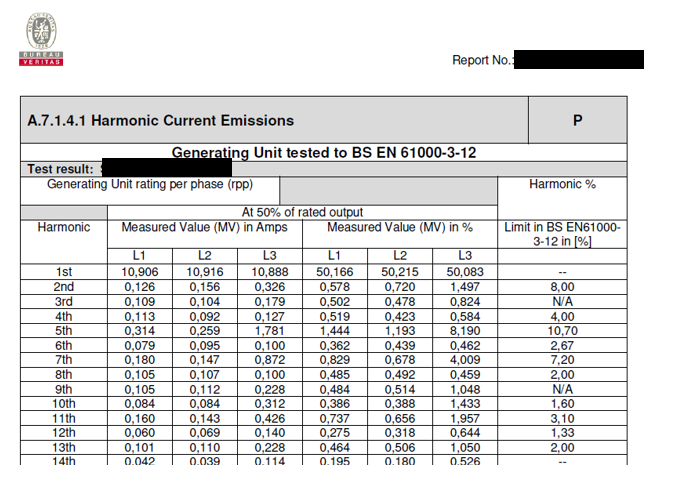
You may wonder – One inverter is ok but how about a number of them accumulatively? I had the opportunity to measure numerous sites whereby the rated PV output was accumulatively more than 1MWac.
Here are two sites whereby the background harmonics can be considered to be on the low side and as such the effects of the on-site inverters were more representative (limited ‘contributions’ from the localized electrical network).
All measurements were done using an IEC 61000-4-30 Class A certified Power Quality instruments.
The Current Harmonic Distortion (ITHD) in the trends below have been scaled to the respective aggregated inverters’ rated current (in other words, shown here as Total Demand Distortion (TDD) values).
As observed here, the TDD values were less than 3% and the sinusoidal shape of the current waveforms were very much still visible.
Note: IEEE 519 recommends TDD values of 5% for power generation facilities.
Site #1:
Premises Type: Warehousing / logistics
PV Size: 1352.8 kWp
Aggregated Inverter(s) Rated Current = 1613A @ 400V.
Measurement Point: 2500A PV-AC DB, directly connected to the Premises 5000A Main Switchboard (served by a 3MVA transformer) via 3000A flexible CTs (clamped on 3 sets of 500sqmm cables per phase).
CT direction towards MSB as Load, PV as Source.
VTHD: 0.89% – 3.96% (CP95: 3.6%).
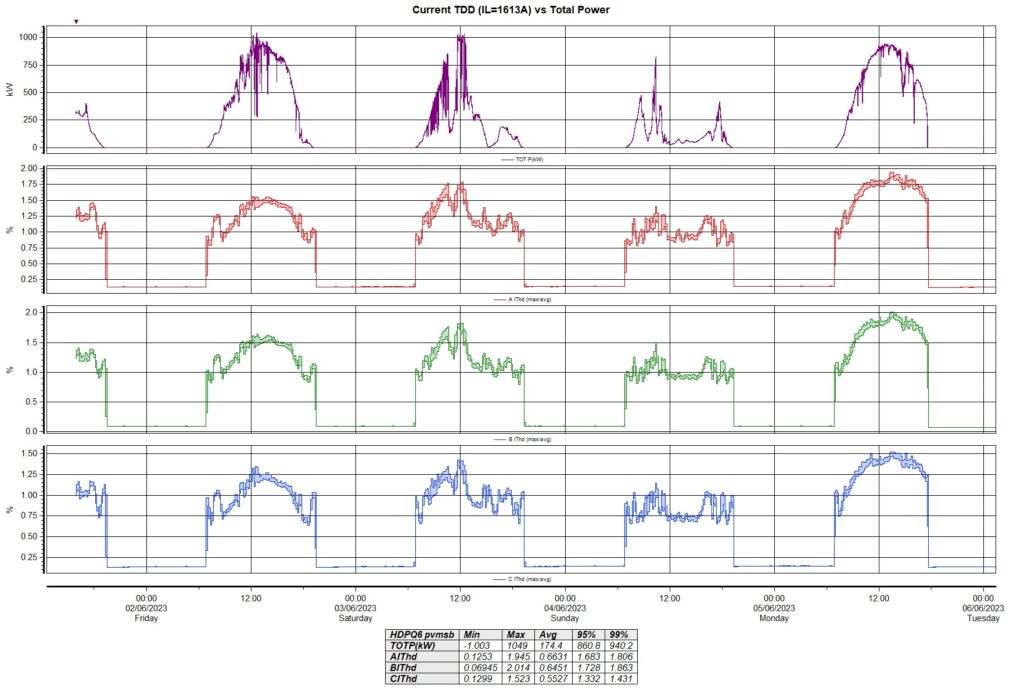
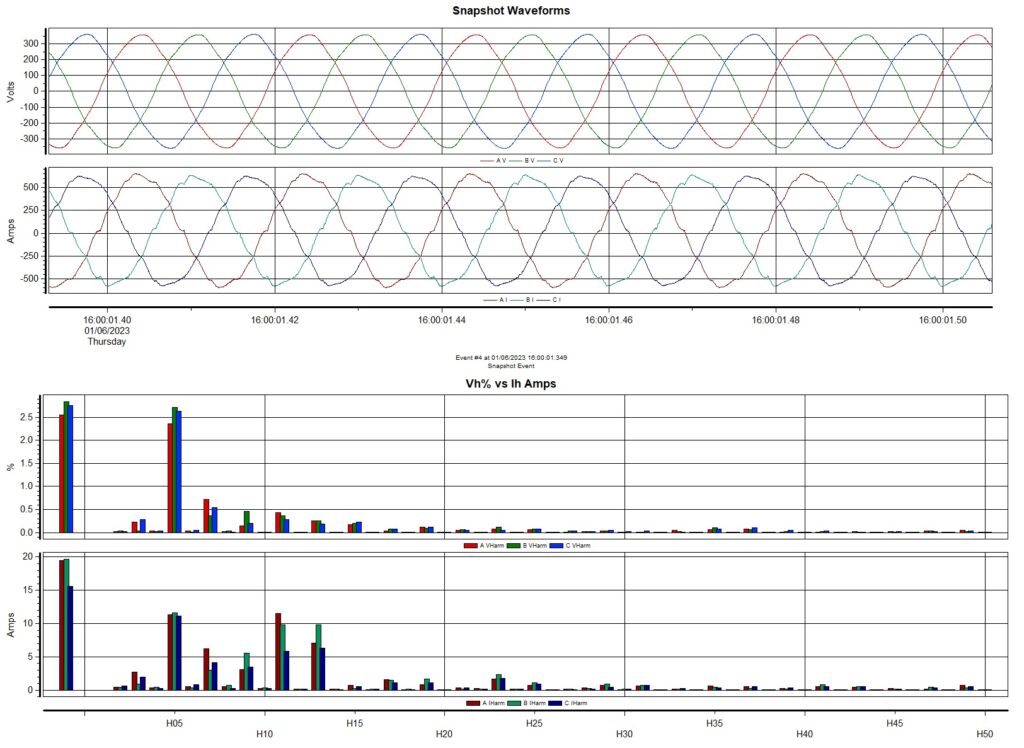
Site #2:
Premises Type: Solar Farm (On-site loads: Auxiliary power and lighting loads only)
PV Size: 2652kWp (for CS1)
Aggregated Inverter(s) Rated Current = 62A @ 22kV (for CS1).
Solar inverters connected at 400V, stepped-up to 22kV via a 2.5MVA transformer.
Measurement Point: 22kV Incomer 1 from PowerGrid (CS1) via VT and CT.
Note: Solar Farm has 2 x 22kV intakes from PowerGrid – only one intake shown here.
CT direction towards PV as Load.
Solar Farm was connected to a Lightly-loaded 22kV distribution network.
VTHD: 0.59% – 1.22% (CP95: 1.09%).
